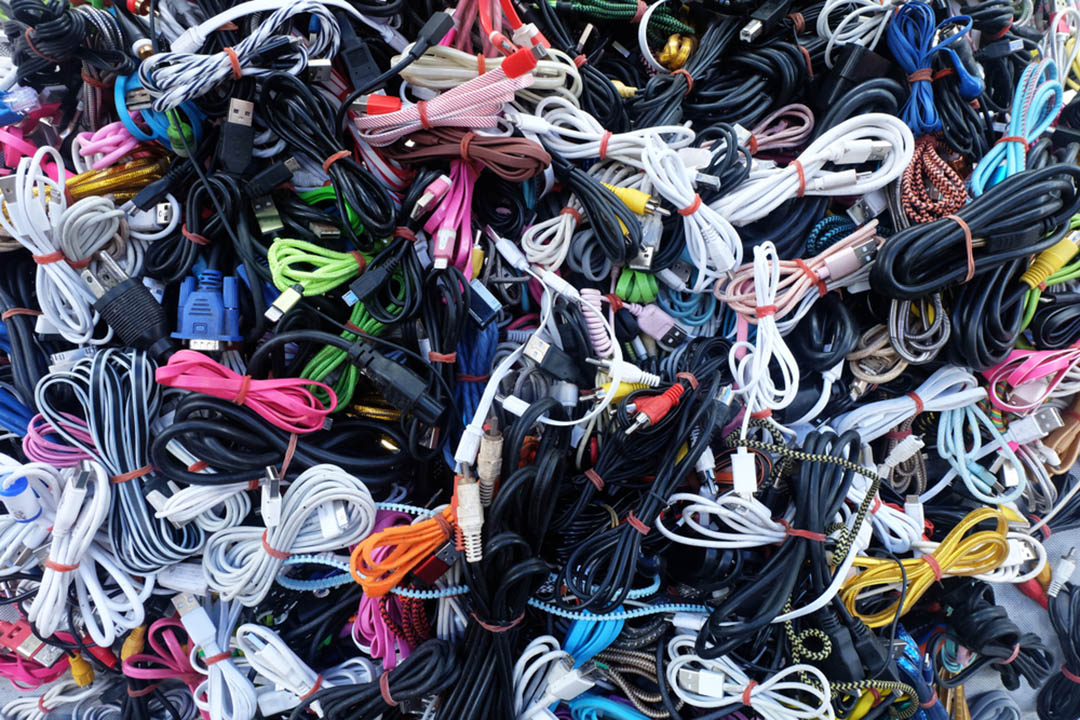
Dissolution recycling processes can provide effective separation of flame retardants, metals and more from e-plastics. | Damrong Rattanapong/Shutterstock
Industry association Plastics Recyclers Europe is looking to raise the profile of dissolution recycling, an often-overlooked process that doesn’t quite fit into common recycling categories and is capable of processing a wide variety of hard-to-recycle materials including e-plastics.
“As the European Union intensifies its push toward a circular economy, dissolution recycling emerges as a promising solution that bridges the gap between mechanical and chemical recycling,” according to a new white paper from Brussels-based PRE, which includes more than 200 EU companies.
Dissolution uses a solvent to dissolve an intended polymer, most commonly PE and PP but also polystyrene, nylon, PET, PVC, polycarbonate and ABS. Other substances, such as inks, additives and barrier layers, do not dissolve and then can be removed, leaving the purified polymer to be collected from the solvent and processed into virgin-quality resin.
The process keeps a polymer’s chemical structure intact, while chemical recycling techniques such as pyrolysis and gasification break down a polymer’s complex chemical structure into new, smaller compounds. As such, dissolution recycling processes belong in the physical recycling category, along with mechanical recycling, PRE asserts.
Solvent-based techniques also could enable reuse of hard-to-recycle materials including plastics from end-of-life electronics, PRE added. E-plastics pose a challenge due to such substances as flame retardants or metals. In addition, dissolution recycling can separate out the pigment, “purifying” the resulting recyclate – as in black ABS, polycarbonate and other polymers used in electronics.
Another advantage of dissolution recycling is its compatibility with existing supply chains, polymer processing facilities and waste collection systems, as it is a polymer-to-polymer recycling method, PRE said.
However, the group emphasized that “as the EU moves towards more sustainable waste management, all recycling technologies, mechanical, dissolution, and chemical, will play complementary roles in addressing different types of plastic waste and achieving different quality standards of recycled materials.”
In April, PRE set up the Dissolution Taskforce to complement its collaboration with the Dissolution Recycling of Plastics Initiative (DROP-IN). At least 40 stakeholders in the EU have joined DROP-IN, including US-based PureCycle and LyondellBasell, which acquired German solvent-based recycler APK last fall.
“Currently, dissolution recycling operates within a regulatory and definitional grey zone, both in the European Union and globally,” according to a recent DROP-IN post on LinkedIn. The group also describes the process as “the overlooked third option between mechanical and chemical recycling.”
Dissolution technologies produce a high-yield resin of quality that is suitable for demanding applications such as food-contact packaging, automotive and electronics.
PRE also urged the EU to harmonize standards throughout its member countries, adding that the lack of regulatory clarity and consistency are hindering adoption of dissolution technologies as well as investment in infrastructure.
However, PRE noted that an International Standards Organization technical committee “is effectively reviewing ISO 15270, with a new focus group ISO 15270 3a, Physical Recycling. This group of experts aims to formally define all known physical polymer recycling processes additional to mechanical recycling, including dissolution recycling (based on the well-known ‘extraction’ separation method, also called dissolution purification).”
A version of this story appeared in Plastics Recycling Update on Oct. 22.
More stories about e-plastics
- LG collection volume increased notably in 2024
- Malaysia to fully halt US e-plastic imports
- E-plastics recycling company expands product line

